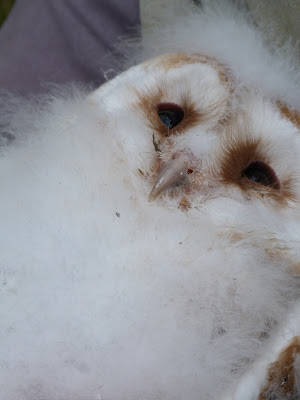We'd arranged to meet LON at Broadwater, our most sheltered site and got six nets up under a sky that threatened rain despite there being none in the forecast.
The birds were slow to get moving after a night with some very heavy rain, but amongst the first songs heard was that of Willow Warbler, a species not yet captured on site this year.
Over the course of the morning we processed just over 40 birds including some Willow Warblers, amongst the usual Chiffchaff and Blackcap, also some Reed Warblers with a control from the Runnymede Ringing Group Bedfont site. We also had a young Cetti's Warbler too.
There was a heavy shower not long after noon but in anticipation we had already packed up and were on our way to the cafe before it became a real problem.
Totals: 35 (7)
Wren - 1 (1)
Robin - 4
Cetti's Warbler - 1
Reed Warbler - 4 (2)
Blackcap - 7
Garden Warbler - 1
Chiffchaff - 7 (3)
Willow Warbler - 4
Great Tit - 3
Blue Tit - 3 (1)
The birds were slow to get moving after a night with some very heavy rain, but amongst the first songs heard was that of Willow Warbler, a species not yet captured on site this year.
Wilwa JRK110, first of the year
Z763146, ringed Bedfont 5th June 2016 as a 4M.
There was a heavy shower not long after noon but in anticipation we had already packed up and were on our way to the cafe before it became a real problem.
Totals: 35 (7)
Wren - 1 (1)
Robin - 4
Cetti's Warbler - 1
Reed Warbler - 4 (2)
Blackcap - 7
Garden Warbler - 1
Chiffchaff - 7 (3)
Willow Warbler - 4
Great Tit - 3
Blue Tit - 3 (1)





























































